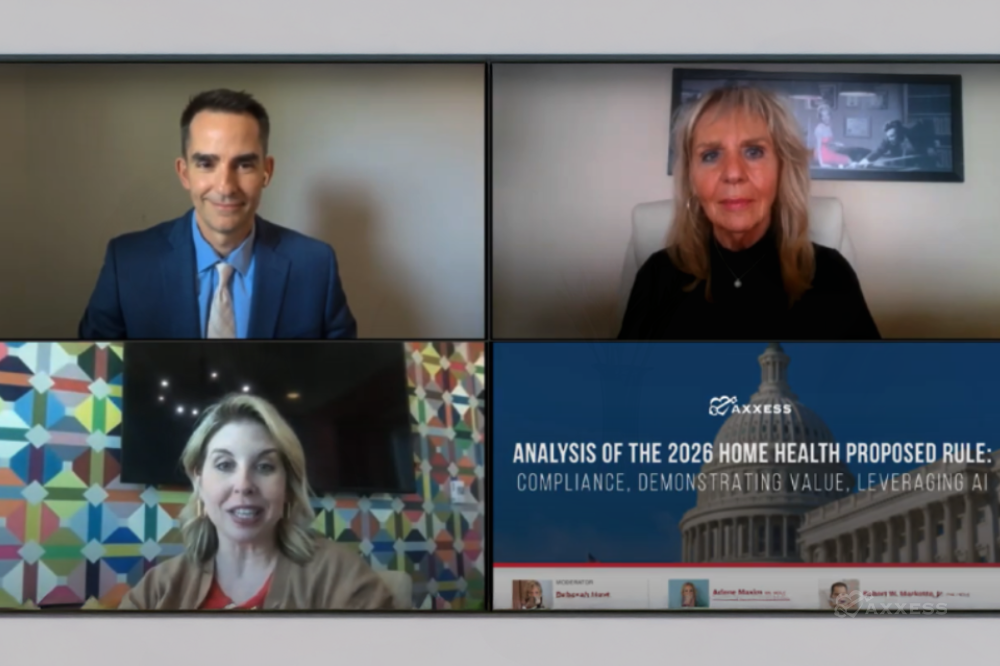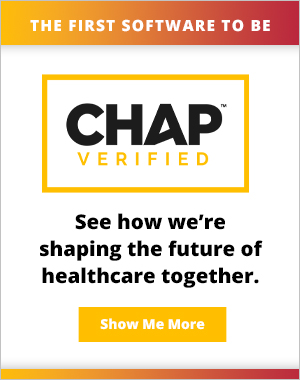
The 2026 Home Health Prospective Payment System (HH PPS) proposed rule includes several regulatory updates, as well as a proposed 6.4% cut in Medicare home health payments.
In a webinar moderated by Laura Barnett, Vice President of External Affairs at Axxess, Axxess Senior Vice President of Professional Services Arlene Maxim, RN, HCS-C, and health attorney at Hall, Render, Killian, Heath, & Lyman Robert W. Markette, Jr., CHC, HCS-C discussed the impact of the proposed rule on home health organizations and outlined strategies that providers can implement to navigate the potential changes with confidence.
Impact of the Proposed Rule
Markette began the discussion by outlining the high points of the proposed reimbursement cuts. He noted that the rationale behind the proposed cuts centers around how the Centers for Medicare and Medicaid Services (CMS) views reimbursement payments in relation to the Patient-Driven Groupings Model (PDGM) and behavioral adjustments.
Markette explained that CMS believes home health providers are paid consistently more than their costs, leading to the belief that additional cuts are necessary.
“CMS looks at the data and MedPAC and says, you were paid 32% more than your costs last year,” Markette said. “And then, somehow, despite inflation and increasing labor costs, we are at 33% in this year’s rule.”
Maxim mentioned that, in addition to perceived profit, these governmental entities consider factors such as access to care, quality of care, adequacy of payment and rehospitalization rates when determining reimbursement reductions.
Markette and Maxim advised providers to plan and budget accordingly for the proposed cut.
“You’ve got to keep thinking about how can I do more with less, because that’s what CMS keeps doing to us,” Markette said.
Preparation Strategies
In thinking about how organizations can prepare for potential cuts, Maxim highlighted the importance of workforce management, noting that will have a direct impact on cost. She emphasized that proper training of staff is going to be essential to navigating any potential cuts.
“I encourage organizations to consider budgeting for the training of their staff,” Maxim said. “Make sure that they have the tools they need to go out into the homes.”
Maxim also suggested that providers reevaluate organizational costs to budget for potential cuts. She recommended that organizations focus on reducing costs related to building leases, mileage payments and supply vendors.
Maxim also encouraged organizations to prioritize the timeliness of care, noting that this will become another significant factor affecting their financial outcomes.
“I would encourage organizations to get the timeliness of care done because it’s going to start costing you money; it’s going to become a part of value-based purchasing,” Maxim said.
Advocacy and Action
Maxim and Markette stressed the importance of responding to the proposed rule, emphasizing the power of collective action. They pointed out that providers should make the issues in the proposed rule personally relevant and not rely solely on national and state organizations to advocate on their behalf.
“The more responses they get, the better off we are,” Maxim said. “One document from a state organization or a national organization is nice to get for the people in Congress, but if they get inundated with mail, that’s what’s going to really make the difference.”
Markette echoed this sentiment and added that organizations should reach out to their elected officials and focus on sharing stories from beneficiaries. Many politicians and decision-makers lack a deep understanding of the home care industry, and personal stories from those affected can have a significant impact.
“We can’t just share talking points; we have to tell them about us,” Markette said. “So, getting to know your elected officials, taking them out on visits, that helps to make it more real. When we take the time to write a more personal, custom letter, that really gets their attention.”
To leave a public comment on the proposed rule, click here.
To watch the full webinar on the analysis of the 2026 proposed rule, click here.
Axxess Home Health, a cloud-based home health software, includes clinical guidance and innovative tools designed to help organizations thrive under regulatory challenges.
